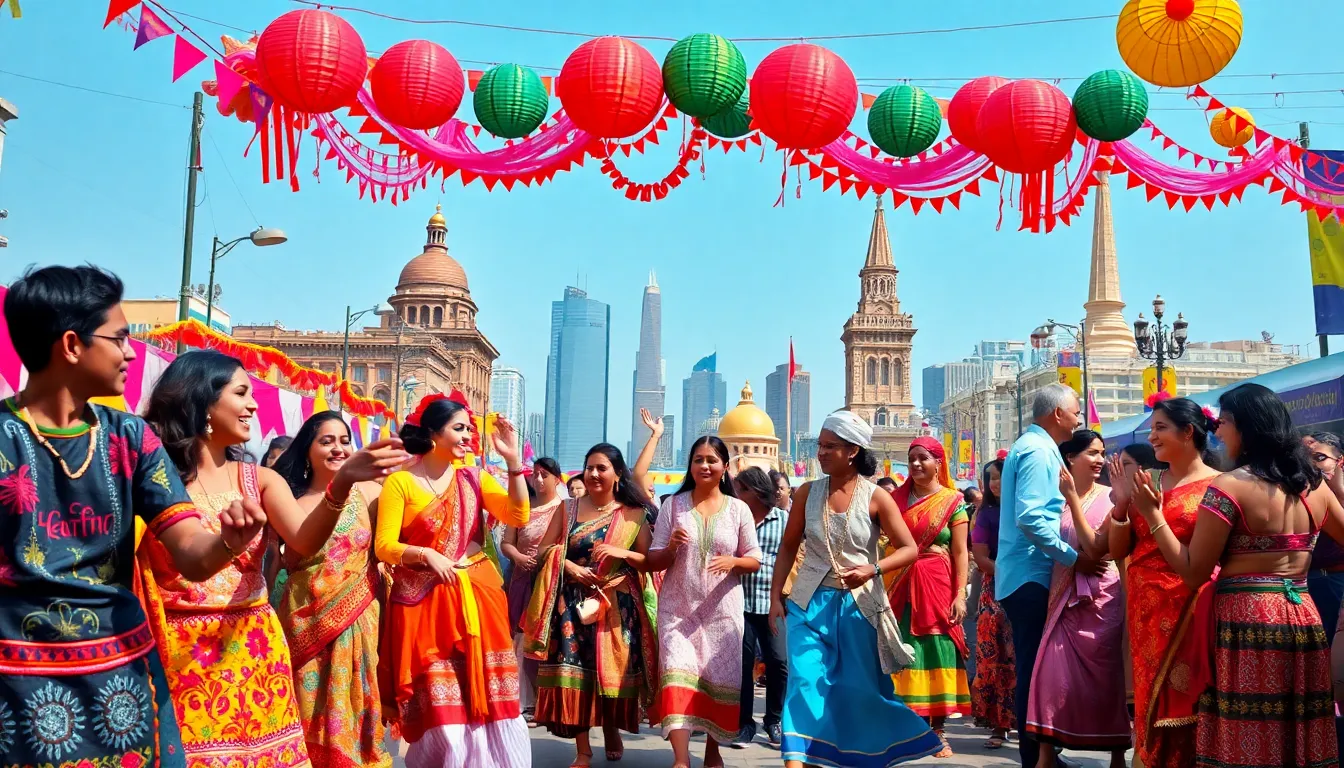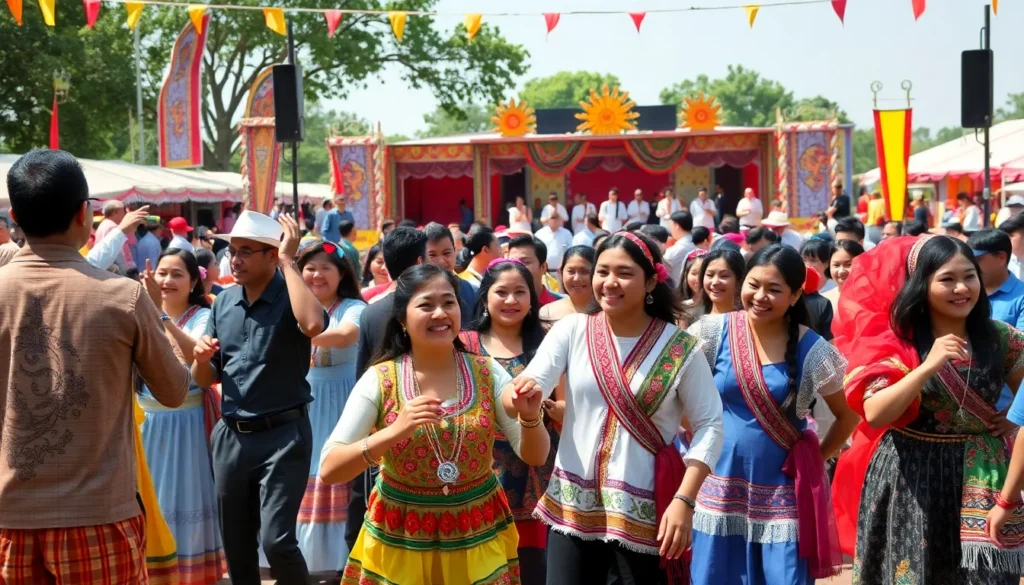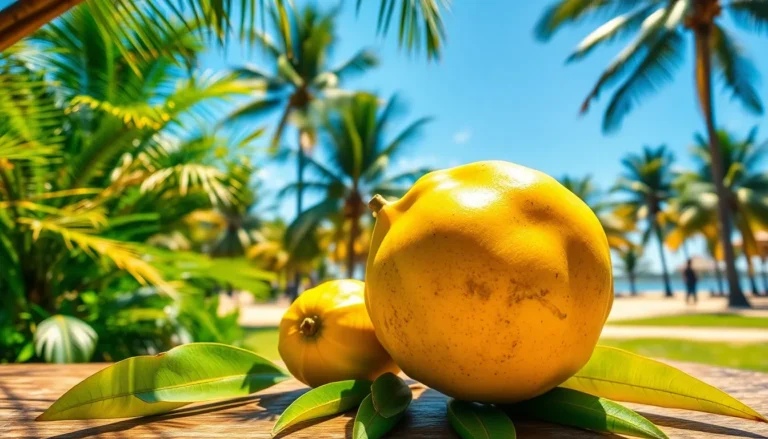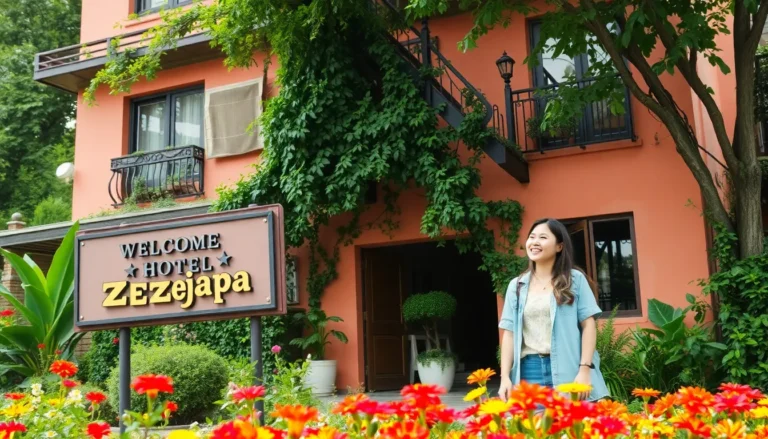Culture shapes societies and influences how people connect with one another. From vibrant festivals to stunning art forms, cultural highlights reflect the unique identity of a community. Exploring these elements opens a window into the values, traditions, and creativity that define a place.
In every corner of the world, cultural highlights offer rich experiences that engage the senses and spark curiosity. Whether it’s a traditional dance, a local culinary delight, or an iconic landmark, these moments create lasting memories and foster a deeper understanding of diverse lifestyles. As travelers and enthusiasts seek to immerse themselves in new cultures, discovering these highlights becomes a journey of its own.
Table of Contents
ToggleOverview of Cultural Highlights
Cultural highlights encompass a wide array of elements that define and reflect the uniqueness of communities. Festivals celebrate traditions, showcasing vibrant rituals and local customs. Art forms, such as paintings and sculptures, illustrate historical narratives and contemporary expressions, offering insights into societal values. Traditional dances provide a glimpse into the heritage and storytelling methods of various cultures.
Culinary delights grant access to diverse flavors, ingredients, and cooking techniques that vary by region. Landmark sites serve as historical reminders, preserving the stories of significant events and figures. Tourism experiences revolve around these cultural highlights, fostering appreciation for lifestyle differences and enhancing intercultural connections.
Exploring these facets encourages a deeper understanding of the world. Each cultural highlight contributes to a richer narrative about humanity, inviting participation and curiosity from travelers and locals alike.
Historical Significance

Cultural highlights carry historical significance, reflecting pivotal moments and influential figures that shaped societies. Understanding these elements provides insight into a community’s identity and evolution.
Key Events
Key events represent milestones in a culture’s history, often marked by celebrations or significant anniversaries. These events exemplify resilience, innovation, and community spirit. Examples include:
- Holidays: Annual observances, like Independence Day celebrations, commemorate pivotal historical moments, fostering national pride.
- Cultural Festivals: Citywide events, such as the Rio Carnival, signify traditions that date back centuries, connecting past generations with present celebrations.
- Memorials and Commemorations: Annual services, like those held on Memorial Day, honor individuals and events that significantly impacted society.
These events enhance the understanding of cultural contexts and shared experiences, fostering a sense of unity within communities.
Influential Figures
Influential figures embody the spirit of their culture, leaving lasting legacies that resonate through time. Recognizing these individuals highlights their contributions to society. Examples include:
- Writers: Notable authors, like Maya Angelou, shaped literature and social identity through their powerful narratives.
- Artists: Visionary painters, such as Frida Kahlo, influenced visual arts, promoting cultural pride and expressing social issues.
- Leaders: Historical figures, like Martin Luther King Jr., inspired movements for change and equality, shaping societal values and aspirations.
These individuals serve as cultural icons, representing ideals, struggles, and achievements that define communities.
Art and Literature
Art and literature serve as powerful mediums for cultural expression, reflecting the values and narratives inherent in societies. Noteworthy contributions significantly influence both local and global cultural landscapes.
Notable Works
Numerous literary and artistic masterpieces showcase the richness of cultural heritage. Key examples include:
- “The Great Gatsby” by F. Scott Fitzgerald: This novel intricately explores themes of decadence and the American Dream.
- “One Hundred Years of Solitude” by Gabriel García Márquez: This work epitomizes magical realism and signifies Latin American literature’s impact.
- “Starry Night” by Vincent van Gogh: This painting highlights emotional depth through its dynamic brushwork and color.
- “The Persistence of Memory” by Salvador Dalí: This iconic piece challenges perceptions of reality and time, illustrating Surrealism.
These notable works not only convey artistic beauty but also provoke thought regarding cultural identity.
Prominent Artists and Authors
Significant figures in art and literature shape cultural narratives through their unique expressions. They include:
- Pablo Picasso: A leader in the Cubist movement, whose innovative techniques revolutionized modern art.
- Toni Morrison: An influential novelist acclaimed for her profound exploration of African American experiences.
- Frida Kahlo: Her self-portraits reflect pain and identity, establishing her as a key figure in feminist art.
- Mark Twain: Renowned for his keen observations of social issues in American society, he captures diverse voices through regional narratives.
These artists and authors contribute enduring legacies, enriching cultural dialogues and inspiring future generations.
Music and Performing Arts
Music and performing arts serve as vital expressions of culture, encapsulating the emotions, stories, and traditions of communities worldwide. They provide a window into the rich diversity of cultural experiences through various genres and performance techniques.
Traditional Music Genres
Traditional music genres reflect the history and identity of specific cultures, often passed down through generations. These genres encompass a variety of styles, each with unique instruments and rhythms that offer a glimpse of heritage.
- Folk Music: Folk music often uses acoustic instruments, serving as a storytelling medium. It includes ballads, choral songs, and regional sounds that reinforce collective memories.
- Blues: Originating in the African American communities of the Deep South, blues music conveys deep emotion through its distinctive chord progressions and lyrical themes of resilience and sorrow.
- Classical Music: Classical music features complex compositions, typically performed by orchestras or chamber ensembles. This genre showcases the pinnacle of musical training and artistry, with roots tracing back to Western traditions.
- Indigenous Music: Many indigenous cultures maintain traditional music forms that utilize native instruments, highlighting their unique worldview and practices.
Modern Performance Trends
Modern performance trends blend historical practices with contemporary influences, often pushing the boundaries of traditional art forms. They evolve with technology and global interconnectedness.
- Fusion Genres: Music genres such as world music or reggae-infused pop merge diverse cultural elements, creating innovative sounds that appeal to varied audiences.
- Digital Performance: Online platforms allow artists to reach wider audiences. Live streaming concerts and digital collaborations become common, showcasing talent across geographical borders.
- Interdisciplinary Art: Many modern performances combine music, dance, theater, and visual arts, creating immersive experiences that engage audiences through multiple senses.
- Social Activism: Increasingly, artists use their platforms to address social issues, blending performance with advocacy to raise awareness and inspire action.
These elements in music and performing arts enhance cultural understanding and appreciation, inviting individuals to engage with diverse perspectives and histories.
Festivals and Celebrations
Festivals and celebrations serve as vibrant expressions of cultural identity, bringing communities together through shared rituals and traditions. Various festivals highlight historical events, seasonal changes, and religious observances across diverse cultures.
- Carnival: Carnival celebrations, prominent in countries like Brazil and Trinidad, feature parades, music, and colorful costumes. This event, rooted in Christian traditions, marks the beginning of Lent, uniting locals and tourists alike in joyous festivities.
- Diwali: Diwali, the Festival of Lights, showcases Indian culture through the lighting of lamps, fireworks, and feasting. This celebration honors the triumph of light over darkness and fosters community bonding among families and friends.
- Oktoberfest: Oktoberfest in Germany stands as one of the largest beer festivals worldwide. Visitors indulge in traditional foods, music, and dance while celebrating Bavarian culture and camaraderie.
- Chinese New Year: Chinese New Year festivities include dragon dances, lantern festivals, and family gatherings. This event emphasizes respect for traditions and ancestry while inviting global participants to engage with Chinese culture.
- Mardi Gras: Mardi Gras in New Orleans, known for its lively parades and masquerade balls, reflects a rich blend of French, Spanish, and African influences. The celebration highlights community spirit through music, dance, and culinary traditions.
- Holi: Holi, the Festival of Colors, marks the arrival of spring in India and is celebrated by throwing colored powders and water. This festival symbolizes love, unity, and the victory of good over evil, creating inclusive and joyous interactions.
These festivals and celebrations illustrate the cultural fabric of communities. They strengthen social bonds, foster shared experiences, and encourage the appreciation of diverse lifestyles. Participation in these events promotes greater understanding of cultural values and traditions, enriching the global community.
Exploring cultural highlights offers a window into the heart of communities worldwide. These vibrant expressions of identity not only celebrate heritage but also foster connections among people. As individuals engage with festivals art and culinary traditions they enrich their understanding of diverse lifestyles.
Travelers and enthusiasts alike benefit from immersing themselves in these cultural experiences. Each highlight serves as a reminder of the shared human experience and the unique narratives that shape societies. By appreciating these elements one can cultivate a deeper respect for the rich tapestry of cultures that exist across the globe.




